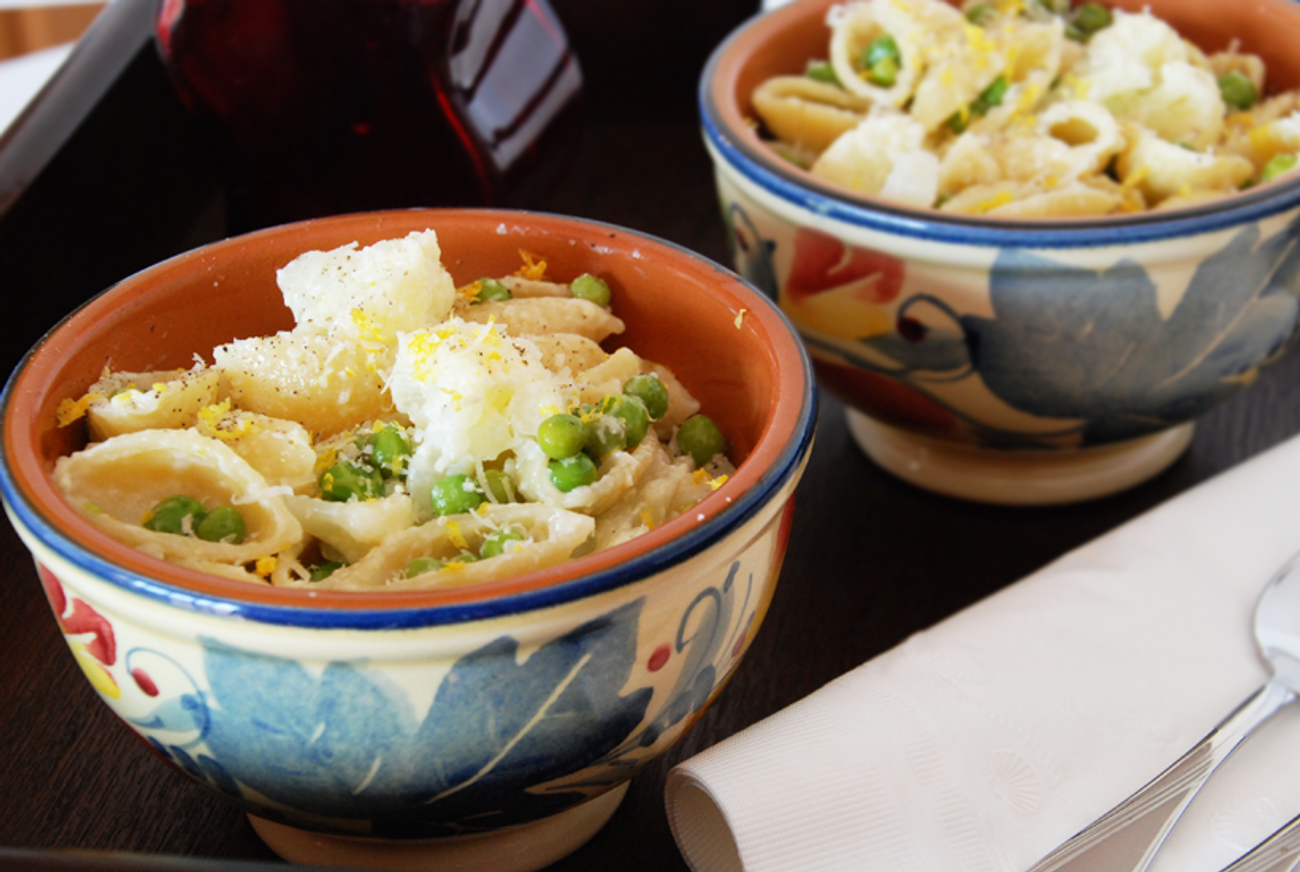Why Shavuot Is Jewish Mother-in-Law’s Day
A convert to Judaism reflects on the Jewish woman who embraced her, and honors her with a holiday recipe




As someone who converted to Judaism, I consider Shavuot, the festival on which we read from the Book of Ruth, an especially meaningful holiday. Ruth, a Moabite woman, is considered the first convert to Judaism. Following the death of her husband, Ruth decides to remain with her mother-in-law, Naomi, instead of returning home to her Moabite family.
But Shavuot, with its emphasis on acceptance—the festival marks the day the Israelites received the Torah—isn’t just significant for those who have converted to Judaism. It’s a time to honor all the modern-day Naomis: the Jewish mothers-in-law who accept converts not only into their faith, but also into their families.
My Naomi is named Gloria. The day we met at her son’s graduate-school graduation, Gloria—my then-boyfriend’s mother—seemed overjoyed to meet me. A few years later, when I began conversion classes, however, I feared that I would never truly bridge my knowledge and cultural gap and feel completely “Jewish”—or be considered so by my future husband’s family. Gloria had a concern, too. But it wasn’t about any of that. She later told me she worried that abandoning my family’s religious traditions would be a sacrifice that would ultimately make me unhappy. Even then she placed my well-being above her own interests, just as Naomi urged Ruth to return to her family upon being widowed. But once I completed my classes, Gloria understood: I, too, was along for the journey. And as a gift following my conversion, she and my future father-in-law, David, sent their son and me on a trip to Israel, where I could walk in the footsteps of Ruth.
My concern about feeling truly Jewish took more time to allay, but having a warm and welcoming Gloria as my personal Naomi sped the process. She took me under her wing with her trademark wit and effusiveness, apologizing early and often for feeding this pasta-loving, part-Italian woman matzo. She delighted in teaching me Yiddish words like sheyna punim (pretty face), mishegas (craziness), potchke (fuss), and shiterein (just throw it in, or cooking without measuring).
That last word was particularly relevant, as Gloria and I forged deep bonds over food—talking about it, making it, and sharing it. Sensing my early interest in learning about Jewish cuisine, she welcomed me into her kitchen, even entrusting me with making the Passover brisket. It was a new recipe, and I had never made brisket before. Perhaps it wasn’t the best time to learn how long it takes to cook brisket, but after my unexpected cooking marathon ended, my first brisket won raves. Not many people would turn over their kitchen—and holiday main dish—to someone new to the food traditions, but Gloria did. And in doing so, she helped me realize how food could strengthen my connections to Jewish culture and tradition.
My friend Cookie Mandell had a similar experience with her Naomi, a Jewish-Italian woman named Lella. Cookie remembers arriving in Israel to meet her new mother-in-law and being greeted with the ever-important question, “Are you hungry?” What followed was a spread of glorious homemade rolls, quince jam, and other favorite family foods.
“From the beginning, our relationship involved food—shopping, preparing, eating, and sharing recipes and techniques,” Cookie, now the director of congregational engagement at Temple Rodef Shalom in Falls Church, Virginia, told me. “But what started as just two women sharing an interest evolved into the transmission of a heritage, of remembrances, of symbols of faith and celebration. She gave me a Jewish soul.”
Such chesed, or loving kindness, drives the Ruth-Naomi story, and I feel lucky that it’s part of my story, too. Honoring that quality and that relationship—with food, of course—is an important part of Shavuot for me. Although many people favor cheesecake and blintzes for the holiday’s emphasis on dairy foods (and I love them, too), in thinking of Naomis, I’m particularly drawn to my recipe for creamy lemon pasta with cauliflower and peas—for Gloria, who loves lemon, but for other symbolic reasons as well.
Years ago, when I searched for recipes to connect my Jewish and Italian heritages (a process that led to my cookbook, Meatballs and Matzah Balls), I kept returning to the idea of lemon pasta. I was intrigued by the flavor because Jews likely played a key role in cultivating citrus in the Mediterranean—just the sort of Jewish-Italian intersection I enjoyed exploring in the kitchen. I also liked how citrus flavors freshened and lightened a creamy sauce, which always seemed a bit too serious and heavy by itself. It reminded me of how Gloria has always brought to our relationship a bright lightness from which I, often on the serious side, have benefited greatly.
Although you often see lemon or cream sauces with fettucine (long flat pasta ribbons), the right pasta for this recipe was never in question. It had to be the shell. The delightfully bite-sized crescent offers both substance and tenderness; as the dish comes together, the sauce and the peas settle into the shells’ little cavities. The combination of textures and flavors creates something far more balanced, integrated, and exquisite than each could be on its own.
May this recipe be a big hug to Gloria, and all the “Naomis” out there, in honor of their warm welcome of converts into Jewish life and family.
Marcia Friedman is the author of Meatballs and Matzah Balls: Recipes and Reflections from a Jewish and Italian Life and The Essential Jewish Cookbook: 100 Easy Recipes for the Modern Jewish Kitchen.